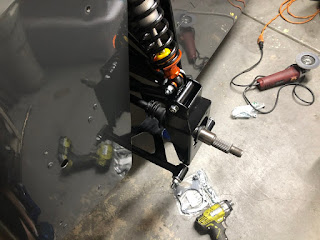I’ve been looking over Richard’s build log for some information on mounting the Sierra brake calipers, having one of those moments where I can only think, man, that just can’t be right? Specifically swapping the calipers left for right. I’m not saying that it isn’t the way GBS intend them to be mounted, just that it's weird because it would make servicing the rear brakes kind of a pain. Having to dismount the rear calipers to bleed them is super sub-optimal.
UPDATE:
After a little experimentation I've confirmed that you can't route the parking brake cables to the calipers if they're on the "correct" sides of the car. Disappointing but whatever...Might be a reason to upgrade to different calipers later.
NOTES:
- Caliper brackets bolt to the uprights with M10x1.5 50mm bolts.
- Parking brake cables are 10mm (3/8") diameter, good to know for replacing the p-clamps.







